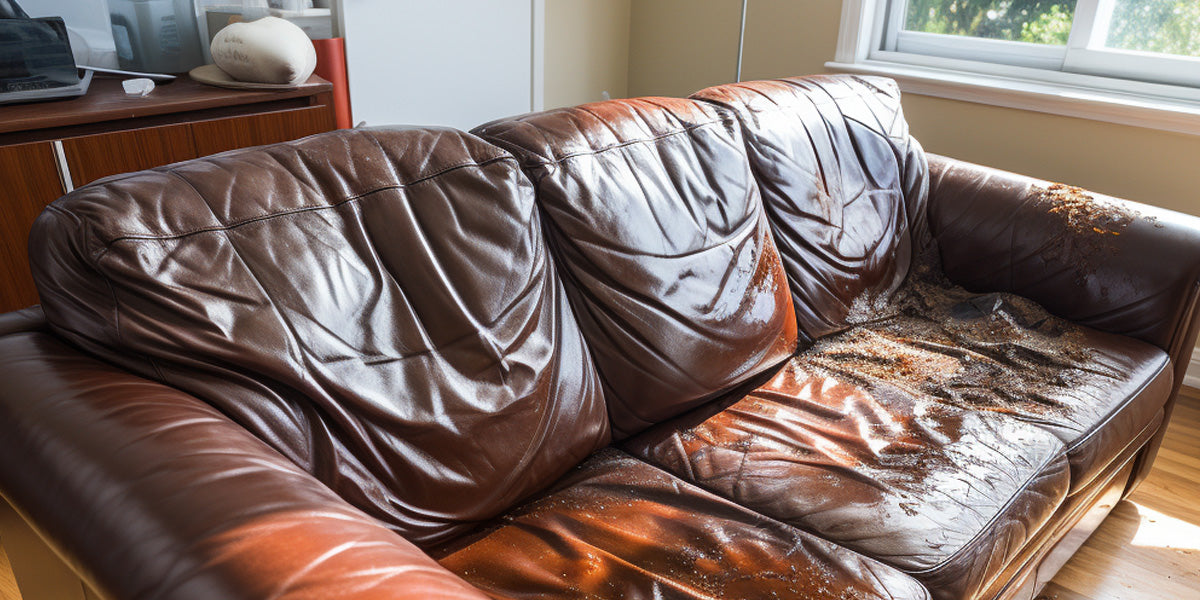How to Fix Leather Shoes Peeling: Ultimate Solutions
To fix leather shoes peeling, clean the shoe, apply dye to the peeled area, let it air-dry, and then polish the shoe with matching leather color. Finally, buff the shoe with a clean cloth.
This process will help restore the appearance of the shoes and prevent further peeling.

Credit: vonbaer.com
Understanding The Causes Of Leather Shoe Peeling
Leather shoe peeling can be a frustrating problem, but understanding the causes can help you find a solution. One reason for peeling is lack of proper care and maintenance. Leather needs to be regularly cleaned and conditioned to keep it moisturized and prevent it from drying out and peeling. Another cause is exposure to harsh elements and chemicals, such as rain, snow, and salt, which can damage the leather and cause it to peel. Additionally, low-quality or damaged leather can also peel more easily. To fix peeling leather shoes, start by cleaning the shoe and applying some dye to the peeled-off area. Let it air-dry and then apply polish in the same color. Finally, buff the shoe with a clean cloth. Taking these steps can help you restore your leather shoes and prevent further peeling.
Assessing The Extent Of The Peeling
When it comes to fixing leather shoes peeling, one of the first steps is to assess the extent of the peeling. This can be done by inspecting the affected areas and identifying the type of leather and its condition.
If the peeling is limited to a small area, it may be possible to fix it by cleaning the leather shoe and applying some dye in the peeled-off area. After allowing it to air-dry, you can then apply some polish with the same leather color and buff the shoe with a clean cloth.
However, if the peeling is more severe or widespread, it may be necessary to seek professional help or consider replacing the leather. It is important to note that faux leather, in particular, may not be as durable and long-lasting as genuine leather, making peeling and cracking more common.
To prevent faux leather from peeling or cracking in the future, it is essential to properly care for and maintain the shoes, including regular cleaning, conditioning, and avoiding exposure to harsh conditions or chemicals.
Repairing Peeling Leather Shoes
| Cleaning the surface of the shoes | Apply a leather moisturizer or conditioner |
| Using a leather adhesive or glue for minor peeling | Using a patch or leather filler for more severe peeling |
| Colour-matching and applying dye or paint | Applying a protective finish |
To fix peeling leather shoes, start by cleaning the surface of the shoes. Use a gentle cleaning solution and a soft cloth to remove any dirt or debris. Once the shoes are clean, apply a leather moisturizer or conditioner to keep the leather supple and prevent further peeling. For minor peeling, you can use a leather adhesive or glue to repair the affected area. Apply the adhesive according to the product instructions and press the peeling leather back into place. For more severe peeling, you may need to use a patch or leather filler. Cut the patch to fit the peeling area and apply it with adhesive. Once the repairs are complete, you can color-match the repaired area and apply dye or paint to blend it with the rest of the shoe. Finally, apply a protective finish to seal the repairs and protect the leather from future damage.
Preventing Leather Shoe Peeling In The Future
Preventing leather shoe peeling in the future involves a few key steps. Regularly cleaning and moisturizing leather shoes is essential for maintaining their condition. This helps to prevent drying and cracking, which can lead to peeling. Avoiding exposure to harsh elements and chemicals is also important. Leather shoes should be protected from rain, snow, and excessive heat or cold, as these can damage the leather and cause it to peel. Storing leather shoes properly by keeping them in a cool, dry place with proper ventilation can help prevent peeling. Investing in high-quality leather shoes can make a difference as well. Higher quality leather is less likely to peel, as it is often treated and processed to be more durable. Finally, seeking professional repair when needed is recommended. A cobbler or leather specialist can provide expert advice and repair services to fix any peeling issues. By following these steps, you can keep your leather shoes looking their best for longer.
Frequently Asked Questions For How To Fix Leather Shoes Peeling
What To Do If Leather Shoes Is Peeling?
To fix peeling leather shoes, first clean the shoe. Apply dye to the peeled area and let it air-dry. Then, use polish in the same color as the leather. Finally, buff the shoe with a clean cloth.
How Do You Fix Fake Leather Peeling?
To fix fake leather peeling, clean the affected area and apply dye. Let it air dry and then polish with the same color of leather. Finally, buff the shoe with a clean cloth.
Can Fake Leather Be Repaired?
Fake leather can be repaired. You can clean the shoe, apply dye to the peeled-off area, let it air-dry, and then polish it with the same color. Finally, buff the shoe with a clean cloth. There are also leather repair supplies and techniques available to restore most faux leather items.
How Do You Fix Leather Shoes Peeling?
To fix leather shoes peeling, start by cleaning the shoe and removing any dirt or debris. Then, apply a leather dye to the peeled off area and let it air-dry. Once dry, apply a polish with the same color as the leather and buff the shoe with a clean cloth.
Conclusion
To fix peeling leather shoes, start by cleaning the shoes and applying dye to the peeled-off area. Allow the shoes to air dry before applying polish in the same color as the leather. Finally, buff the shoes with a clean cloth to restore their appearance.
Taking these steps will help extend the usability of your shoes and prevent further peeling. Remember to always use the right techniques and leather repair supplies to achieve the best results.







